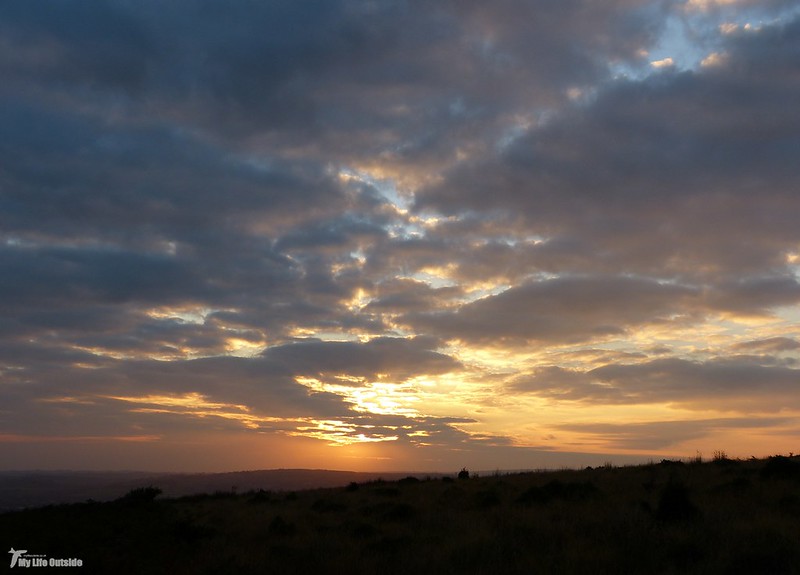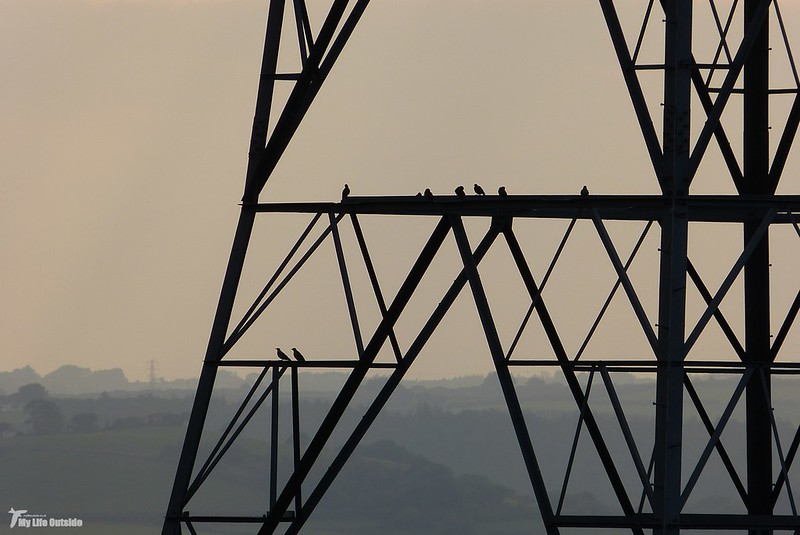A surge in motivation saw me make two evening visits out onto patch last week, both delivering my first new species there for at least a couple of months. Heading out on Monday conditions were very hazy but with the sun still managing to break through and humidity levels high it felt more like the middle of summer than the first day in September. Walking up the old railway line I was pleased to find a Golden-ringed Dragonfly avidly laying eggs in the small drainage ditch which runs alongside, a repeat of similar scenes from this time last year. Such was her determination to reach the water that she would barge through the often thick vegetation creating a surprisingly loud racket when wings connected with reeds. Overhead there were still a few House Martins and Swallows about but numbers were much reduced compared to the large influx of a week before.
Pushing on the plan was to climb the old incline and follow an ancient tramway along what I have dubbed the ‘western spur’. At its end sits an area of mature woodland which I hope one day will turn up a few common but thus far patch elusive species. A good scan this time around revealed a promising mixed flock of Blue Tit, Great Tit, Long-tailed Tit, Coal Tit and calling Chiffchaff, but not a lot else. It was in fact the bracken covered hillside behind which delivered the goods when a persistent alarm call put me onto a Spotted Flycatcher. Views were brief to say the least but I was left in no doubt that for the third year running this delightful bird has graced the patch. One of my goals for 2014 had been to try and determine if Spotted Flycatchers were summer residents here or merely passing through, and although not conclusive I’m leaning more and more towards the latter.

With the sun slipping rapidly behind Cefn Drum I headed back down the valley where I encountered what can only be described as a very camp Fox. It walked out of the bushes ahead of me and was clearly oblivious to my presence until it glanced backwards and finally realised the error. Quick as a flash it turned and ran straight into a deep puddle which, judging from the large leap which followed, was not a particularly pleasant experience. Ground regained it tumbled back into cover, pride severely dented but no long term harm done. I was still chuckling to myself when movement on the river caught my eye. Through the by now very deep shadows I picked out a Grey Wagtail, another new patch year tick and a long overdue one at that. I’ve seen these birds further down in the village on numerous occasions and have been willing one up into my recording area ever since.
Tuesday turned out to be similarly hazy but against my better judgement I decided to make the climb up onto Cefn Drum where a sheltered hollow delivered numerous Willow Warblers and a pair of Blackcaps. The latter are something of a patch rarity so I soaked up the unexpected close encounter though they never performed well enough for the camera. Moving on a flock of at least thirty Mistle Thrushes feeding on the ground represented a new record for the species here. Their numbers seem to have been increasing steadily since I first walked these hillsides and with plenty of juveniles present it looks as though they’ve had a very successful season.
Also showing in horrifically good numbers where hoards of biting flies who seemed determined to drain my right arm of blood. Only the right arm notice so I’ve no idea what’s so unappetising about its opposite number. Such were my levels of discomfort (and this coming from someone who normally seems immune to insect bites) that a female Pheasant taking flight near the summit barely caused me to bat an eyelid. I only stirred slightly more when a flock of four birds followed soon after, then quickly wished I’d been paying better attention as I realised they were in fact Grey Partridges! Regular readers may recall my excitement at finding a pair up here a couple of years ago and it really is excellent to see them still going strong and their population potentially on the increase. Sure their lineage undoubtedly traces back to birds bred for shooting as opposed to a true wild population, but then again where is that not the case these days?

55 Species / 56 Points




0 Comments